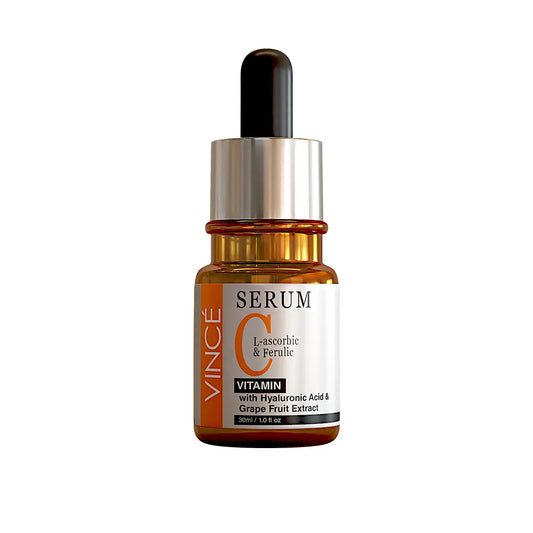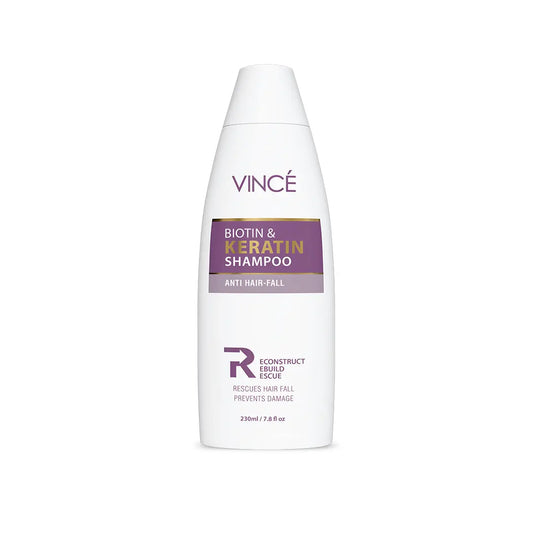Top 7 Home Remedies to Remove Dead Skin from Feet

Have you ever had a pedicure treatment? Do you feel that the skin under your feet is the roughest skin on your body or that your heels are always cracked? There are many ways to soothe your cracked heels and rough skin.
The feet skin has fewer oil glands to keep them hydrated, so it is not surprising that keeping them soft and smooth can be difficult.
Dry and cold weather, standing for long periods, walking too much, wearing too-tight shoes, and harsh soaps can contribute to dry, cracked heels and feet. Also, similar skin conditions such as athlete's foot, eczema, and psoriasis can occur. Diabetes can also cause changes that cause dry and cracked skin on the feet.
Types of Dry Skin

Dry weather, hot water, and exposure to certain chemicals can cause your skin to become dehydrated. Medical conditions can also cause dry skin. Dermatitis is a medical term for dehydrated skin. There are many different types of dermatitis.
1. Contact Dermatitis
When your skin reacts to something that touches you, causing local inflammation, contact dermatitis occurs. Irritated contact dermatitis can occur when your skin is exposed to an irritating chemical agent such as bleach.
Allergic contact dermatitis occurs during skin exposure to a substance you are allergic to.
2. Seborrheic Dermatitis
It occurs when the skin produces a lot. It usually results in red and rough rashes on your scalp. These dermatitis's are more common in newborns.
3. Atopic Dermatitis
Atopic Dermatitis is also called eczema. This skin condition causes dry, itchy spots on your skin. It is common among young children.
Other conditions, such as psoriasis and type of diabetes, can also cause your skin to become dry.
What Causes Dead Skin on the Feet?

Dead skin on the feet is a natural way for your feet to shed dead skin cells.
If your feet are constantly in closed socks or shoes, walking or running can cause dead skin due to lack of moisture. It can also occur if you do not regularly care for, exfoliate or clean your feet.
Dead skin under your feet may look dry, cracked, loose, or sagging. It is usually not painful unless it results from an athlete's foot, eczema, or infection. In this case, see a doctor for treatment.
If your feet are filled with cracks and want to make your feet skin soft. Then, these are the five best ways to get rid of dead skin cells from feet.
Many things can cause dry skin, including environmental causes and specific health conditions.
Environmental causes of dry skin:
- Using harsh deodorants or cleaning products
- Long, hot shower or bath
- Living in cold, dry conditions
- Use of heat sources, such as central heating or wood-burning stoves, which dry the air
Sometimes, dry skin can be the result of primary health conditions. Below are some common ones.
1. Dehydration
The body uses water to perform many essential functions. If people consume more water than they use, they may suffer from dehydration. It affects the complete body and can cause dry skin.
Drinking enough water can prevent dehydration.
2. Eczema
Eczema is a skin condition that causes swollen, itchy, dry skin. These conditions include Atopic Dermatitis, contact dermatitis, seborrheic dermatitis, nummular eczema, and stasis dermatitis.
3. Diabetes
In diabetes patients, the body cannot control the amount of sugar in the blood. Their blood sugar levels can be too low or too high. High blood sugar levels can cause itchy and dry skin.
4. Kidney Disease
The kidneys do a lot of work in the body. The kidney removes waste and excess fluid from the body.
When the kidneys get disturbed, the body cannot maintain a proper balance of minerals, nutrients, and water in the blood. People with kidney disease urinate more than usual. All of this reduces the amount of fluid in the body and can lead to dry skin.
5. Anorexia
People with an eating disorder limit their food intake. It can lead to malnutrition, which can lead to dry skin.
6. HIV
People living with HIV have dry skin than people without the virus. Scientists have shown a trusted source that this could be due to several reasons:
- The way the virus damages the immune system
- The person who is not eating enough
- A side effect of the drug
Other Common Causes
1. Heat:
centralized heating, wood-burning stoves, space heaters, and fireplaces reduce humidity.
2. Environment:
Living in cold, windy conditions or low humidity climate.
3.Too much bathing or shaking:
Taking a long, hot shower or bath or rubbing your skin too much can dry your skin. Taking a bath 3 to 4 times a day also removes natural oils from your skin.
4. Hard soaps and detergents:
Many popular soaps, detergents, and shampoos remove moisture from your skin because they are formulated to remove oils.
5. Other skin conditions:
People with skin infections such as psoriasis and Atopic dermatitis (eczema) are more likely to have dry skin.
6. Medical treatment:
Some people develop dry, oily skin after undergoing cancer treatment, undergoing dialysis, or taking certain medications.
7. Aging:
As people age, the skin becomes thinner and produces less essential oil for the skin to retain water.
Symptoms of Dry Skin
Dry skin is often temporary or seasonal; you may only get it in the winter. The symptoms of dry skin can depend on your age, health condition, skin color, living environment, and sunlight. These include:
- A sensation of skin tightness
- The skin that feels and looks rough
- Itching
- Light to intense glowing skin, causing ash to appear, which can affect dry brown and dark skin
- Mild to severe scaling or peeling
- Look at the cracked "dry riverbank" leg
- Thin lines or cracks
- Skin ranging from reddish to brown on white skin and grey on black skin
- Deep cracks that can cause bleeding
Natural Remedies to Remove Thick Dead Skin from Feet
Dead cells on the skin's surface fall off naturally and are replaced by new cells. When a person does not remove dead skin cells, they can become thick, flaky spots on the feet.
Over time, dry areas can become thick or cracked, especially on the heels. Cracked heels make the feet infected, while thick calluses can make walking difficult or painful.
The following section discusses the seven best ways to treat dry skin and remove dead skin from the feet.
1. Paraffin Wax
Many salons offer paraffin wax for pedicure treatments.
Paraffin wax is a soft wax and melts at about 125 ° F (51 ° C). The wax should not be hot enough to irritate or burn your skin. Paraffin wax treatment can also do at home.
You will dip your feet in wax several times during paraffin wax treatment. After applying several layers of wax, wrap your feet in plastic.
Once the wax has hardened, you can remove the wax. Any dead skin on your feet will remove with wax. Your feet should feel soft later.
Paraffin wax is not for you if you have:
- Poor blood circulation
- Itchy or open sores on your feet
- Lost the sensation in your legs, as in diabetic neuropathy
When using paraffin wax at home, be very careful and monitor the wax temperature with a candy thermometer.
2. Pumice Stone
Pumice stone is natural lava rock. It can help remove calluses or dead skin from your feet.
For use:
Dip one foot into warm water. To soften your foot, you can also soak your feet in warm water for 10 minutes.
Gently move the stone around your feet in a circle or sideways to remove dead skin. Remove the top layer of the skin of the foot, not the entire dead skin layer, which will help promote healthy cells. Apply lotion or oil afterward to soften your feet. Never use a pumice stone on wounds or bruises.
3. Oatmeal Scrub
You can use oatmeal to make an exfoliator at home to remove dead skin. To make a scrub, mix equal parts of oatmeal in rosewater or milk and make a paste.
For use:
- Apply the scrub to your feet and leave it on for 20 to 30 minutes.
- Use a foot brush to clean your feet.
- Rinse with water and let your feet dry.
- Apply foot cream.
Do this treatment every other day for the best results.
4. Vince Foot scrub

Most pharmacies and drugstores sell different foot scrubs over the counter. You can use Vince's foot scrub to clean dead skin on your foot.
You can also make a wax at home by mixing two tablespoons of sea salt in lemon juice and baby oil.
To use Vince's foot scrub, apply the scrub directly to your feet and rub gently with your palm. Or use a foot scrub brush or sponge to remove dead skin.
Rinse the scrub thoroughly with warm water after use.
5. Soak or Scrub Epsom Salt
Soak your feet in Epsom salt mixed water for 15 minutes. It can help remove and smooth dry, cracked feet. As a result, it can help remove dead skin.
For use:
- Soak Epsom salt in a footbath with 1/2 cup of salt or a full cup of hot water in a bathtub.
- Rest and soak for 20 minutes.
- You can use a foot brush to remove dry skin.
- To make an Epsom salt scrub for your feet, mix a tablespoon of Epsom salt with a bath or olive oil in the shower or bath, on hand, or on a bath sponge.
- Gently rub on wet skin to remove, soften and remove dead skin before washing with water.
6. Baby Foot Peel
Baby Foot Peel is a popular 1-hour home remedy for removing dead skin and smoothing your feet.
You will apply the provided plastic boots on your feet for an hour. They contain a gel solution of fruit acids and other moisturizers that can help remove dead skin from feet.
Follow all instructions on the package:
- After wetting your feet, you will secure the plastic boots to your feet with adhesive tape.
- Leave the boots for an hour.
- Remove herbs and gently wash your feet with soap and water.
- You will need to wet your feet daily for three to seven days.
Although there have been no scientific studies supporting the benefits or efficacy of this treatment, it is trendy among people.
7. Soak In Vinegar
Soaking in vinegar can help soften the feet and help you remove dry, cracked, or dead skin. You can use any vinegar. Apple cider vinegar or white vinegar is popular options, and you may already have them in your kitchen.
Use cold water to soak, as hot water can make the skin drier. Use 1 part vinegar to 2 parts water as general guidelines. Soak your feet in mixed liquid to get started.
If desired, soak using a pumice stone to remove dry or loose skin using the instructions above. Apply Vince moisturizer, petroleum jelly, or Vince coconut oil before putting on the socks to absorb the vinegar in the moisture after soaking.
Conclusion
Dry skin is a common health problem. It occurs when the skin does not get the moisture or oil it needs to retain itself. Dry skin can be itchy, red, or even painful.
Environmental factors, such as cold weather or dry air, can cause dry skin. It can also be caused by health conditions, including eczema, dehydration, and diabetes.
People can solve most dry skin problems by taking simple steps, such as a moisturizer. Sometimes, however, people may need prescription drugs.
People should consult a doctor if they find that their dry skin does not improve with home remedies or interfere with their daily life.



